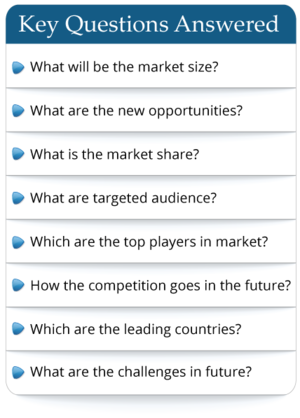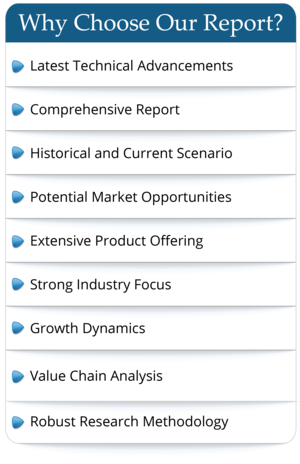Global Alcohol Based Concentrates Market Research Report 2023
SKU ID : QYR-23485567 | Publishing Date : 10-Apr-2023
Highlights
The global Alcohol Based Concentrates market was valued at US$ million in 2022 and is anticipated to reach US$ million by 2029, witnessing a CAGR of % during the forecast period 2023-2029. The influence of COVID-19 and the Netherlands-Ukraine War were considered while estimating market sizes.
According to the recent past activities in various regions in the world, it can be concluded that consumption of alcohol or alcohol-based products has become an accompaniment for a number of reasons such as celebrations, commiserations, the end of the working day, and others. In many developed regions such as Europe, Canada, the U.S., alcohol is a socially accepted part of their daily life. Younger population of the world is influenced by their peer group or peer thinking, which is a factor driving the growth of the alcohol-based market. Changing lifestyles, an influence of social media and Internet, increasing social parties, adolescents with high social network influence, greater family incomes, and others have easier access to alcoholic drinks and alcoholic products, which is also driving demand for alcohol. Moreover, globally, the gender gap in terms of alcohol consumption is closing as there is increasing acceptance of female drinking in the societal norms. Because of all these factors, people are attracted towards alcohol and alcohol-based products, which is driving the growth of the alcohol-based flavor market and this is expected to continue over the forecast period. According to WHO, in 2005, the worldwide consumption of alcoholic beverages was around 6.13 liters of pure alcohol per person, who were above 15 years of age. The highest consumption level was mostly found in the Northern Hemisphere and also in the areas of Argentina, Australia, and New Zealand. There are various disadvantages and risks which can be caused by advertisements of alcohol-based products, publicly. There are foods, which contain the high volume of alcohol and if are exhibited publicly may cause harm to the image of the product. Consumers are looking towards clean-label products since the recent past and thus, if the alcohol-based products are advertised, consumers would not prefer it because of the adverse health effects of alcohol. Moreover, attracted to the advertisements, children may consume alcohol unintentionally while consuming the products. Due to this, the taste of alcohol can get familiarized among children. By consuming alcohol flavored products, children have the chance to get used to the taste of alcohol before they reach the legal drinking age. However, the alcohol in food is also hidden for recovering addicts.
Report Scope
This report aims to provide a comprehensive presentation of the global market for Alcohol Based Concentrates, with both quantitative and qualitative analysis, to help readers develop business/growth strategies, assess the market competitive situation, analyze their position in the current marketplace, and make informed business decisions regarding Alcohol Based Concentrates.
The Alcohol Based Concentrates market size, estimations, and forecasts are provided in terms of sales volume (K MT) and revenue ($ millions), considering 2022 as the base year, with history and forecast data for the period from 2018 to 2029. This report segments the global Alcohol Based Concentrates market comprehensively. Regional market sizes, concerning products by type, by application and by players, are also provided.
For a more in-depth understanding of the market, the report provides profiles of the competitive landscape, key competitors, and their respective market ranks. The report also discusses technological trends and new product developments.
The report will help the Alcohol Based Concentrates manufacturers, new entrants, and industry chain related companies in this market with information on the revenues, sales volume, and average price for the overall market and the sub-segments across the different segments, by company, by type, by application and by regions.
By Company
Givaudan
Döhler
Kerry Group
Firmenich International
Symrise
Sensient Flavors International
Frutarom Industries
Segment by Type
Amaretto
Blueberry
Butterscotch
Cherry Brandy
Creme De Cacao
Peach
Others
Segment by Application
Chocolate
Bakery
Food and Beverage
Others
Consumption by Region
North America
U.S.
Canada
Europe
Germany
France
U.K.
Italy
Russia
Asia-Pacific
China
Japan
South Korea
India
Australia
Taiwan
Indonesia
Thailand
Malaysia
Philippines
Vietnam
Latin America
Mexico
Brazil
Argentina
Middle East & Africa
Turkey
Saudi Arabia
U.A.E
Core Chapters
Chapter 1: Introduces the report scope of the report, executive summary of different market segments (by region, product type, application, etc), including the market size of each market segment, future development potential, and so on. It offers a high-level view of the current state of the market and its likely evolution in the short to mid-term, and long term.
Chapter 2: Detailed analysis of Alcohol Based Concentrates manufacturers competitive landscape, price, sales and revenue market share, latest development plan, merger, and acquisition information, etc.
Chapter 3: Sales, revenue of Alcohol Based Concentrates in regional level and country level. It provides a quantitative analysis of the market size and development potential of each region and its main countries and introduces the market development, future development prospects, market space, and market size of each country in the world.
Chapter 4: Provides the analysis of various market segments by type, covering the market size and development potential of each market segment, to help readers find the blue ocean market in different market segments.
Chapter 5: Provides the analysis of various market segments by application, covering the market size and development potential of each market segment, to help readers find the blue ocean market in different downstream markets.
Chapter 6: Provides profiles of key players, introducing the basic situation of the key companies in the market in detail, including product sales, revenue, price, gross margin, product introduction, recent development, etc.
Chapter 7: Analysis of industrial chain, including the upstream and downstream of the industry.
Chapter 8: Introduces the market dynamics, latest developments of the market, the driving factors and restrictive factors of the market, the challenges and risks faced by manufacturers in the industry, and the analysis of relevant policies in the industry.
Chapter 9: The main points and conclusions of the report.
Frequently Asked Questions
- By product type
- By End User/Applications
- By Technology
- By Region

 Pre-order Enquiry
Pre-order Enquiry Request Free Sample
Request Free Sample


 Request Sample
Request Sample Request Customization
Request Customization Check Discounts
Check Discounts











